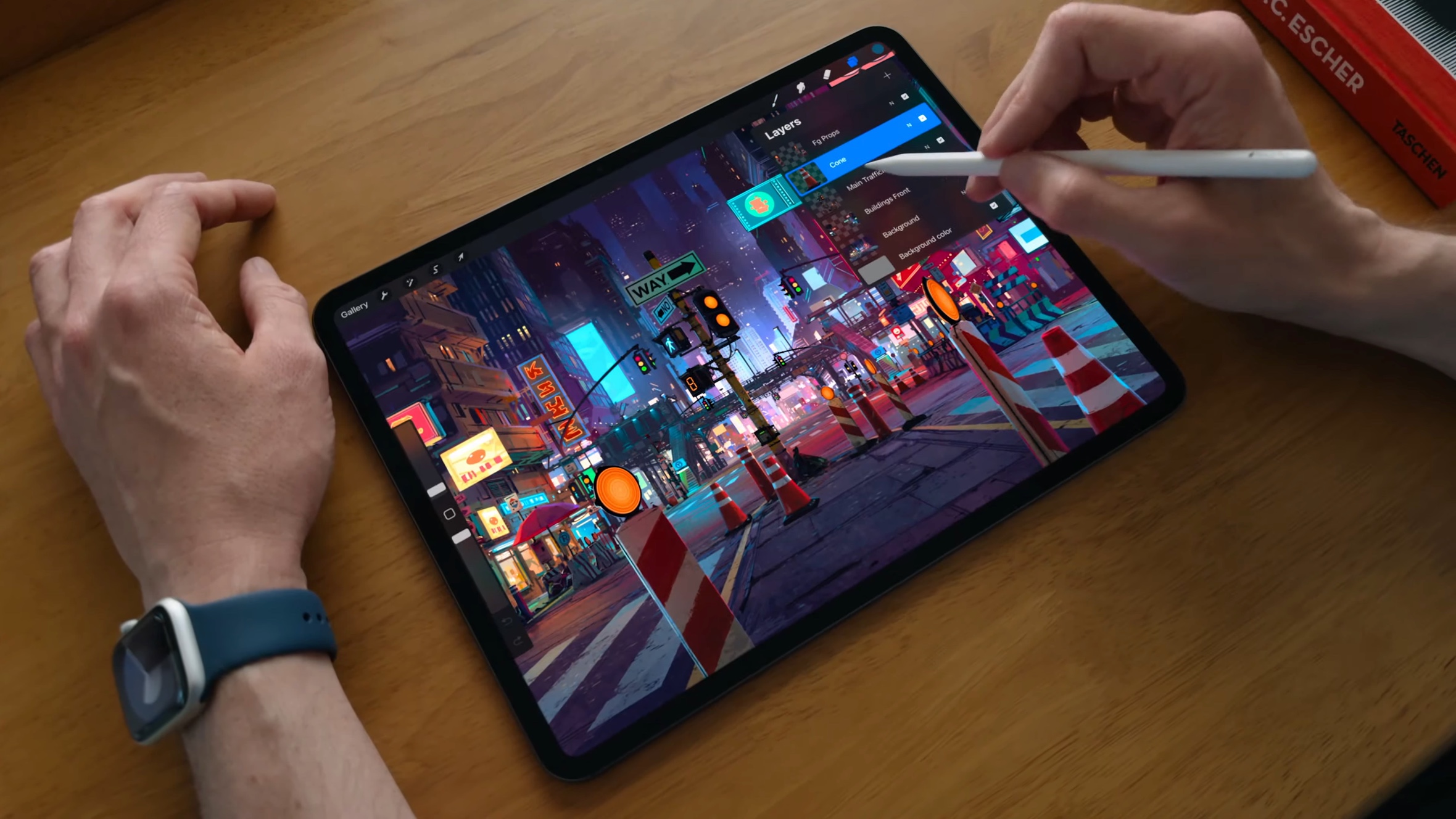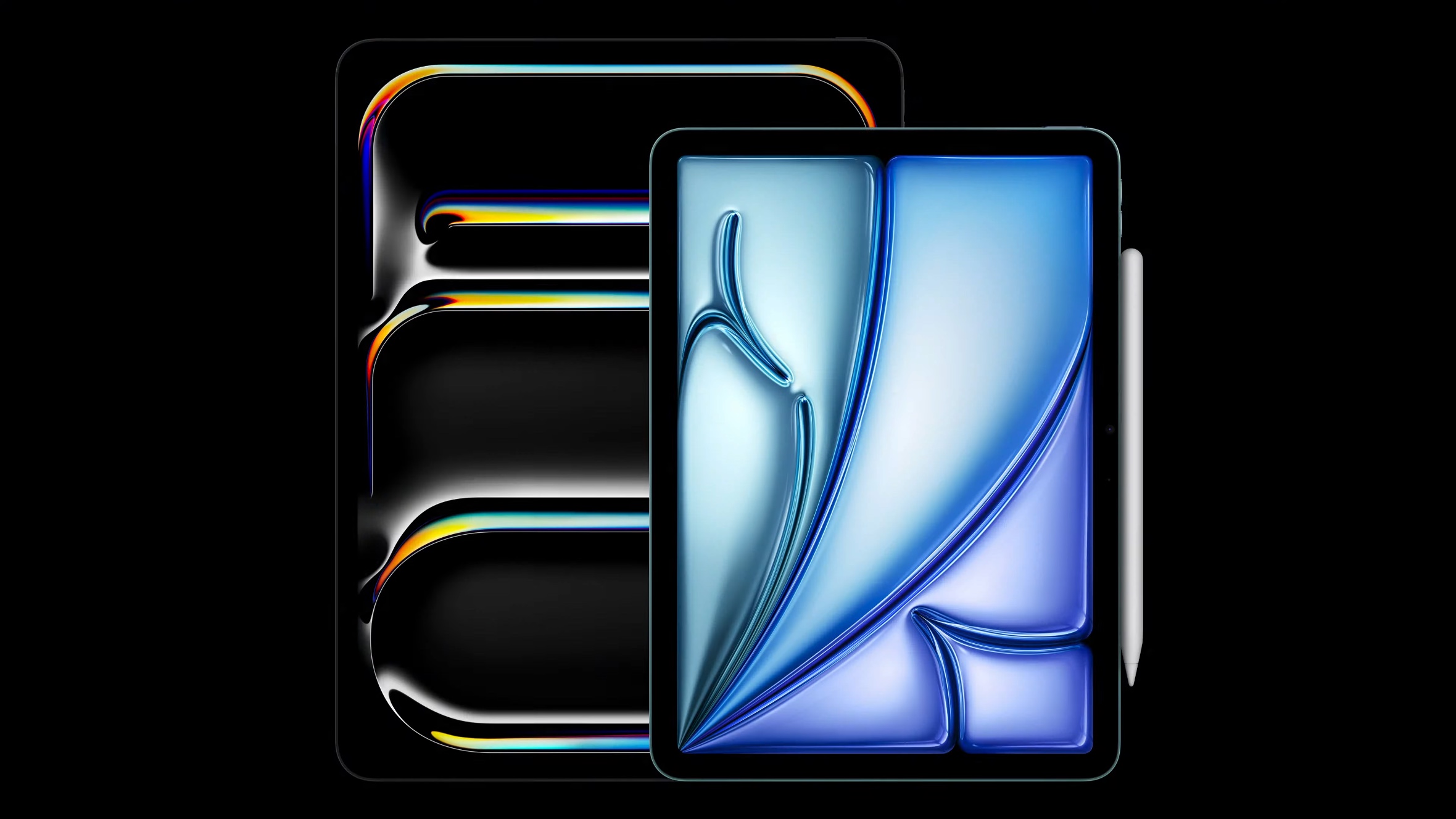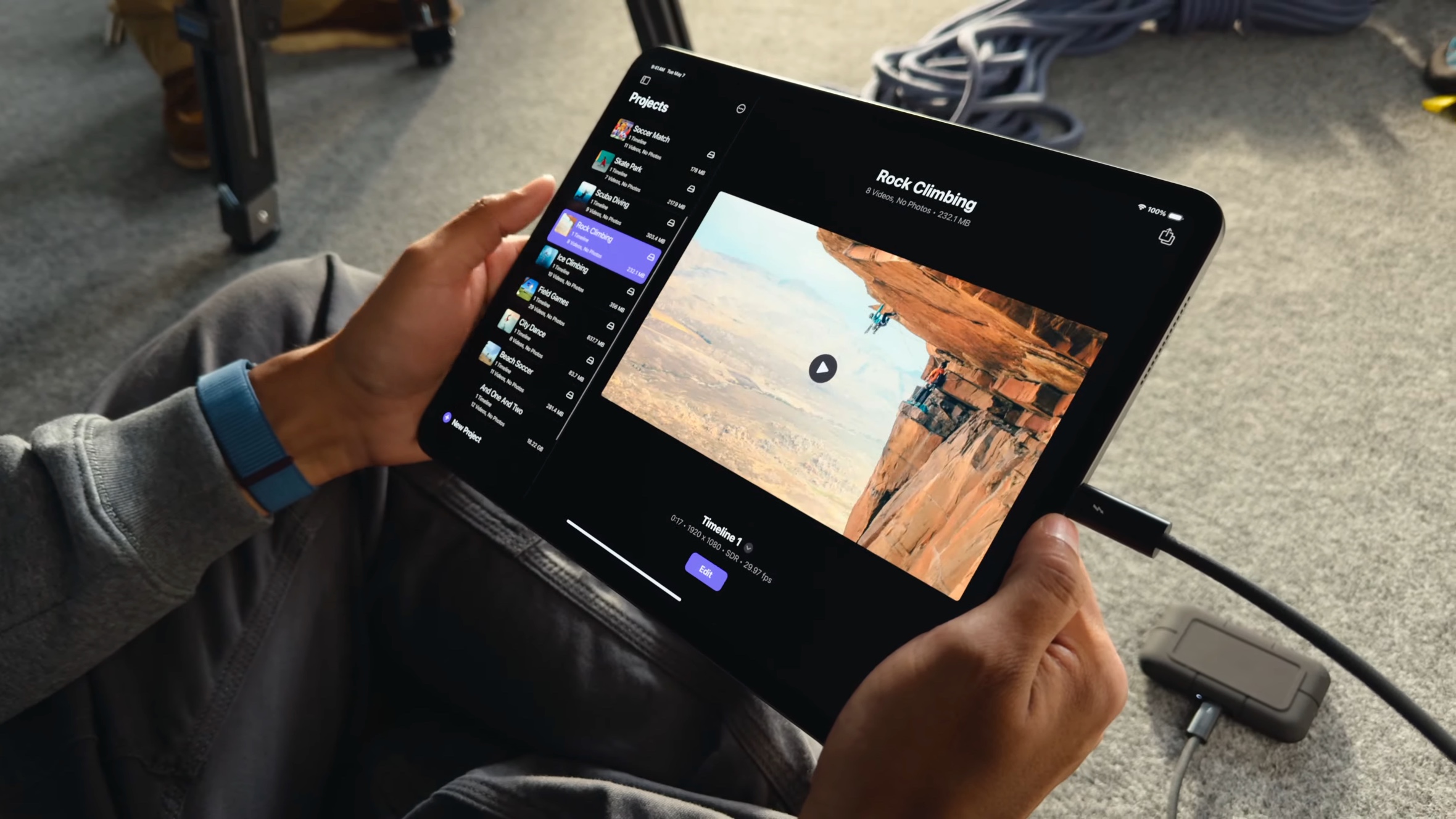
As rumoured, Apple announced its first iPad with an OLED screen in early May. But the latest iPad Pro doesn't just have any old OLED screen – it uses tandem OLED technology in what Apple calls an ultra retina XDR display. Typically Apple, it claims this is "the world's most advanced display".
We're here to unpack exactly what that means. What does tandem OLED technology entail? And it might surprise you to know that Apple wasn't the first to use it...
What is tandem OLED technology?

As the name suggests, tandem OLED uses two OLED panels 'in tandem' to combine the light from both. By layering two lots of OLED pixels on top of each other, you get extra brightness, which addresses the criticism that's most often levelled at OLED screens: that they're not bright enough, especially compared to LED and LCD screens. That's why we've seen such a glut of brightness-boosting technologies come to OLED TVs lately, like heatsinks, Micro Lens Array (MLA) and Quantum Dots.
Tandem OLED technology was first developed by LG Display in 2019 for use in automobiles to make heads-up displays more durable, so they could last the lifespan of the car. The iPad Pro is the first consumer tablet to feature the tech.
How does it work?

Because OLED pixels generate their own light, having twice as many generates much more light. And not just in peak highlights, but across the whole screen.
This part is key. It means the picture is brighter overall, rather than just one or two key details really popping. Apple says the new iPad Pro can reach 1000 nits of full-screen brightness for SDR and HDR.
It goes even brighter for smaller highlights – Apple claims 16000 nits for peak HDR brightness. Admittedly that's not as bright as the latest OLED TVs (which reach 3000-4000 nits), but it's still pretty impressive.
It's worth noting that these figures are the same that Apple claimed for its previous Mini LED 12.9-inch iPad Pro. It's undoubtedly an achievement to hit these stats with an OLED panel and all the advantages that brings, but it won't be so bright you'll have to wear sunglasses.
What are the advantages of tandem OLED?

Increased brightness is the most obvious one, but there are other benefits too.
For starters, higher brightness doesn't just mean that the picture has more 'pop'. It reveals more dark detail, so scenes in murky environments or with lots of shadows become clearer. And it will make the picture easier to see in bright sunlight. It also enables sub-millisecond control over both the colour and luminance of each pixel, resulting in greater responsiveness during motion and less blooming.
One downside to OLED screens is that they're susceptible to burn-in. This is where one image stays on-screen so long that it becomes indelibly 'burned' into the screen – think the BBC logo if you watch too much of the BBC News channel. With tandem OLED, each layer actually operates at a less bright level than a single array of pixels would have to, making them more efficient in terms of energy and heat use. Which should make it less likely you have the BBC News logo permanently etched into the corner of your screen, no matter how much Jeremy Bowen you watch.
This higher efficiency should also help the screen last longer. Chinese display maker BOE claims its tandem OLED technology increases an OLED screen's lifespan by six times. And with a 40 per cent increase in efficiency, we should see a longer battery life per charge as well.
Tandem OLED has all the benefits of standard OLED technology too, like absolute black levels, great colour reproduction, slimmer dimensions and ultra-wide viewing angles.
What's the downside of tandem OLED?

One word: price. As you can imagine, increasing the number of pixels comes at a cost, and in the case of the latest iPad Pro, it's a hefty one. Prices start at £999 / $999 / AU$1699 for the 11-inch and £1299 / $1299 / AU$2199 for the 13-inch – that's £50 / $200 / AU$300 more expensive than the previous 12.9-inch model, and £200 / $200 / AU$300 more than the previous 11-inch iPad Pro. But then the new models do have other extras, like the brand-new M4 processor and slimline design.
Hopefully we'll see prices come down as the tech becomes more widespread.
Where else is tandem OLED tech used?

Apple isn't the only company using tandem OLED screen tech. The Honor Magic 6 Ultimate launched in March 2024 as the first device to use tandem OLED screen tech made by Chinese display maker BOE. But it hasn't launched in the US or UK, and there's no word on whether it ever will.
Tandem OLED tech has been used previously in cars, and according to specialist site OLED Info, it will also be used in laptops, tablets and monitors where the UI is more susceptible to burn in.
One of OLED's most prominent uses is in TVs, but so far there's been no mention of TVs using tandem OLED tech. That's presumably due to the cost and complexity of developing the technology for these much larger displays. But as the costs come down, you never know...
With Apple ordering millions of tandem OLED displays, expect other manufacturers to follow suit, which should make the technology much more mainstream and possibly used in a wider range of devices. Looks like we'll be hearing a lot more about tandem OLED in future.
MORE:
Check out the best iPads
The new iPad Pro costs as much as an LG OLED TV – but perhaps for good reason
This one change would make the OLED iPad Pro perfect for me







